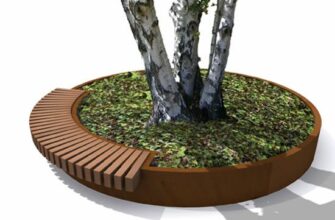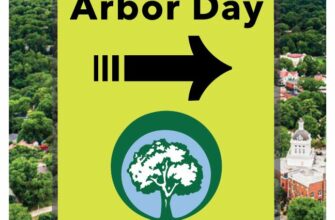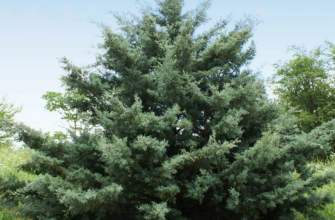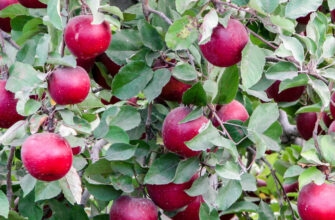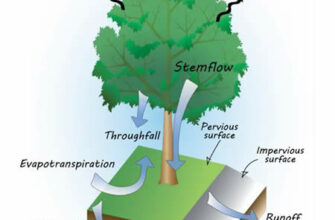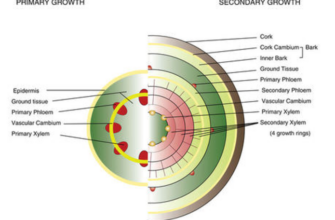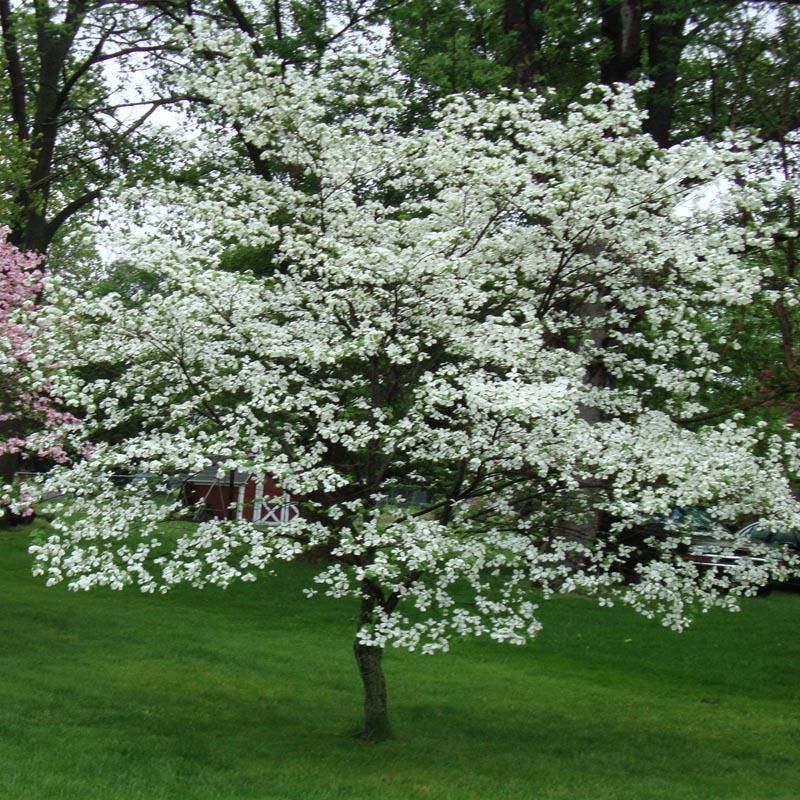
- Exploring the Beauty of the American Dogwood: A Friday Favorite Tree
- The Beauty of the American Dogwood
- Characteristics of the American Dogwood
- Native Habitat of the American Dogwood
- Seasonal Changes of the American Dogwood
- Growth and Maintenance of the American Dogwood
- Choosing the Right Location for Your American Dogwood
- Planting and Caring for Your American Dogwood
- Common Diseases and Pests of the American Dogwood
- Pruning Tips for the American Dogwood
- Using the American Dogwood in Landscaping
- Historical Significance of the American Dogwood
- Symbolism and Meaning of the American Dogwood
- Popular Varieties of the American Dogwood
- Benefits of Planting American Dogwoods
- Attracting Wildlife with American Dogwoods
- American Dogwood in Art and Literature
- Preserving and Protecting the American Dogwood
Exploring the Beauty of the American Dogwood: A Friday Favorite Tree
The American Dogwood is a beloved tree that is native to North America. It is known for its stunning beauty and is often referred to as the “queen of the spring.” This tree is a favorite among many people, and for good reason.
One of the most striking features of the American Dogwood is its flowers. These flowers are small and delicate, with four petals that come in shades of white, pink, and red. They bloom in the spring, creating a breathtaking display of color. Many people look forward to the arrival of spring just to see the beautiful flowers of the American Dogwood.
In addition to its beautiful flowers, the American Dogwood also has attractive foliage. Its leaves are oval-shaped and have a vibrant green color. In the fall, the leaves turn a stunning shade of red, adding to the tree’s overall beauty.
Favorite Tree Friday is a series that celebrates trees and highlights their unique qualities. This week, we are featuring the American Dogwood as our favorite tree. Its stunning flowers and vibrant foliage make it a favorite among many tree enthusiasts. If you’re looking to add beauty to your landscape, consider planting the American Dogwood.
The Beauty of the American Dogwood
The American Dogwood, also known as Cornus florida, is a favorite tree among many nature enthusiasts. Its delicate beauty and vibrant colors make it a popular choice for landscaping and gardens.
One of the most striking features of the American Dogwood is its flowers. These small, four-petaled blooms come in shades of white, pink, and even red. They appear in clusters, creating a stunning visual display that attracts birds and butterflies.
In addition to its flowers, the American Dogwood also boasts attractive foliage. Its leaves are oval-shaped and turn a deep red in the fall, adding a pop of color to any landscape. The combination of the colorful flowers and foliage makes this tree a true showstopper.
Another interesting aspect of the American Dogwood is its bark. The bark is smooth and gray, with a unique pattern that resembles puzzle pieces. This distinctive bark adds texture and visual interest to the tree, even when it is not in bloom.
The American Dogwood is also known for its berries, which appear in the late summer and early fall. These small, round berries are bright red and attract birds, making the tree a valuable food source for wildlife.
Overall, the American Dogwood is a beautiful tree that adds charm and elegance to any landscape. Its stunning flowers, colorful foliage, unique bark, and berries make it a favorite among nature lovers. Whether planted in a garden or enjoyed in its natural habitat, the American Dogwood is sure to impress with its beauty.
Characteristics of the American Dogwood
The American Dogwood is a favorite tree among many people, and for good reason. This beautiful tree is known for its stunning display of flowers, which bloom in the spring and add a burst of color to any landscape. The flowers are typically white or pink, and they have four petals that give them a unique and delicate appearance.
One of the most distinct characteristics of the American Dogwood is its bark. The bark of this tree is smooth and grayish-brown in color, with small ridges and furrows that add texture to its overall appearance. The bark also tends to peel in small, thin strips, giving the tree an interesting and eye-catching pattern.
The leaves of the American Dogwood are another notable feature. They are oval-shaped and have a dark green color, with prominent veins that run throughout. In the fall, the leaves turn a vibrant shade of red, adding a touch of warmth to the autumn landscape.
In addition to its beautiful flowers, bark, and leaves, the American Dogwood also produces fruit. The fruit is a small, round berry that starts off green and turns a bright red as it ripens. These berries are a valuable source of food for birds and other wildlife, making the American Dogwood an important part of the ecosystem.
Overall, the American Dogwood is a truly remarkable tree. Its stunning flowers, unique bark, vibrant leaves, and nutritious fruit make it a favorite among nature lovers and a valuable addition to any garden or landscape.
Native Habitat of the American Dogwood
The American Dogwood, or Cornus florida, is a favorite tree among nature enthusiasts. It can be found in various habitats across the United States, making it a versatile and adaptable species.
This beautiful tree is native to the eastern and southern parts of the United States, including regions such as the Appalachian Mountains, the Gulf Coast, and the Mid-Atlantic states. It thrives in a variety of environments, from moist woodlands to dry, rocky slopes.
The American Dogwood is known for its stunning white or pink flowers, which bloom in the spring. These flowers attract a wide range of pollinators, including bees and butterflies, making it an important tree for supporting local ecosystems.
While the American Dogwood is adaptable to different habitats, it prefers well-drained soil and partial shade. It can tolerate some sun exposure, but excessive heat and drought can be detrimental to its health. In the wild, it often grows as an understory tree, benefiting from the protection of taller trees.
Overall, the native habitat of the American Dogwood is diverse and expansive, allowing it to thrive in various regions of the country. Its adaptability and beauty make it a beloved tree among nature lovers and a valuable asset to local ecosystems.
Seasonal Changes of the American Dogwood
The American Dogwood tree is a favorite among many gardeners and nature enthusiasts due to its stunning seasonal changes. Throughout the year, this tree goes through distinct transformations that add beauty and interest to any landscape.
In the spring, the American Dogwood bursts into a vibrant display of flowers. Its delicate white or pink blooms cover the tree, creating a breathtaking sight. These flowers not only attract pollinators like bees and butterflies but also symbolize new beginnings and the arrival of warmer weather.
As summer approaches, the American Dogwood transitions into a lush canopy of green leaves. The tree provides shade and shelter, making it a perfect spot to escape the summer heat. The leaves are smooth and ovate with prominent veins, adding texture and interest to the tree’s overall appearance.
In the fall, the American Dogwood puts on a showstopping display of colors. The leaves transform into shades of red, orange, and purple, creating a picturesque scene. This vibrant foliage attracts visitors from far and wide who come to witness the tree’s autumnal splendor.
During the winter months, the American Dogwood may lose its leaves, but it remains an attractive addition to any landscape. The tree’s unique branching structure becomes more visible, adding architectural interest and creating a striking silhouette against the winter sky.
Overall, the American Dogwood’s seasonal changes make it a favorite tree for many. Its ability to adapt and transform throughout the year adds beauty and variety to any garden or natural setting.
Growth and Maintenance of the American Dogwood
The American Dogwood is a favorite tree among many nature enthusiasts. Known for its beautiful flowers and vibrant colors, this tree adds a touch of elegance to any landscape. It is native to North America and can be found in various regions across the continent.
When it comes to growth, the American Dogwood requires a well-drained soil and a moderate amount of sunlight. It thrives in moist, acidic soil and can tolerate partial shade. It is important to provide regular watering during dry periods to ensure healthy growth.
Pruning is an essential part of maintaining the American Dogwood. It is recommended to prune the tree during late winter or early spring before the new growth begins. This helps maintain the tree’s shape and promotes proper air circulation. Dead or diseased branches should be removed to prevent the spread of any potential diseases.
Fertilizing the American Dogwood is also crucial for its growth and overall health. A balanced fertilizer with a ratio of nitrogen, phosphorus, and potassium should be applied in early spring and again in late summer. This provides the necessary nutrients for the tree to thrive.
In terms of pests and diseases, the American Dogwood is susceptible to a few common issues. Powdery mildew, leaf spot, and dogwood anthracnose are among the most common diseases that can affect this tree. Regular inspection and treatment with appropriate fungicides can help prevent and control these issues.
In conclusion, the American Dogwood is a beautiful tree that requires proper care and maintenance to thrive. With the right conditions and regular attention, this favorite tree can bring joy and beauty to any garden or landscape.
Choosing the Right Location for Your American Dogwood
When it comes to planting your favorite American Dogwood tree, selecting the right location is crucial for its growth and overall health. The American Dogwood is a beautiful tree known for its stunning flowers and vibrant foliage, making it a popular choice among gardeners and nature enthusiasts.
First and foremost, it is important to choose a location that provides ample sunlight for your American Dogwood. While this tree can tolerate some shade, it thrives in full or partial sunlight. Aim for a spot that receives at least six hours of direct sunlight each day to ensure optimal growth and flower production.
Additionally, the soil conditions play a significant role in the success of your American Dogwood. This tree prefers well-draining soil that is rich in organic matter. Before planting, amend the soil with compost or peat moss to improve its drainage and fertility. Avoid areas with heavy clay or compacted soil, as they can lead to waterlogged roots and poor growth.
Furthermore, consider the overall space requirements of the American Dogwood. This tree typically reaches a height of 20 to 30 feet and has a spread of 25 to 30 feet. Ensure that you choose a location with enough space for the tree to grow and expand its branches without being crowded or obstructed by other plants or structures.
Lastly, it is crucial to consider the climate and hardiness zone of your area when selecting a location for your American Dogwood. This tree is native to eastern and central parts of the United States and thrives in USDA hardiness zones 5 to 9. Ensure that your chosen location falls within this range to provide the ideal growing conditions for your American Dogwood.
By carefully selecting the right location for your American Dogwood, you can ensure its long-term health and beauty. Consider the sunlight, soil conditions, space requirements, and climate of your area to create the perfect environment for this beloved tree.
Planting and Caring for Your American Dogwood
When it comes to planting and caring for your favorite American Dogwood tree, there are a few important steps to follow. First, choose a suitable location for planting. The American Dogwood thrives in partial shade, so find an area in your yard that receives morning sun and afternoon shade.
Before planting, prepare the soil by loosening it with a garden fork or tiller. This will help the roots of the tree to establish themselves more easily. It is also a good idea to amend the soil with compost or organic matter to improve drainage and fertility.
When planting your American Dogwood, dig a hole that is twice as wide and just as deep as the root ball. Place the tree in the hole, making sure the top of the root ball is level with the ground. Backfill the hole with soil, gently firming it around the roots to remove any air pockets.
After planting, water your American Dogwood thoroughly and regularly, especially during the first year. This will help the tree establish a strong root system. Mulching around the base of the tree with a layer of organic mulch will help to retain moisture and suppress weeds.
When it comes to caring for your American Dogwood, regular pruning is important to maintain its shape and health. Prune any dead or diseased branches, as well as any crossing or rubbing branches. It is best to prune in late winter or early spring, before the tree begins to bloom.
Lastly, be sure to monitor your American Dogwood for any signs of pests or diseases. Common pests include aphids, scale insects, and dogwood borers. If you notice any issues, consult with a local arborist or horticulturist for advice on treatment options.
By following these planting and care guidelines, you can enjoy the beauty of your favorite American Dogwood tree for many years to come.
Common Diseases and Pests of the American Dogwood
The American Dogwood, a favorite tree among many, is unfortunately susceptible to a number of diseases and pests. These can cause significant damage to the health and appearance of the tree if left untreated.
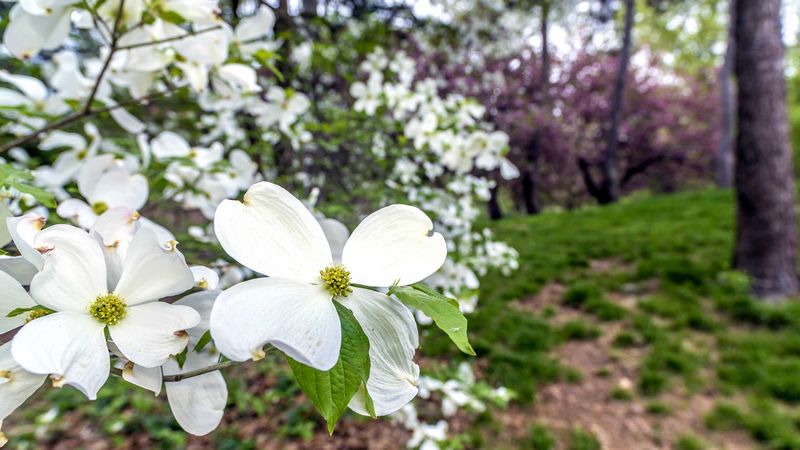
1. Dogwood Anthracnose: This fungal disease is one of the most common and destructive diseases affecting American Dogwoods. It causes leaf spot, stem cankers, and dieback. Infected trees may exhibit wilting, brown discoloration, and premature leaf drop. Fungicides and proper cultural practices can help manage the disease.
2. Powdery Mildew: Another fungal disease, powdery mildew appears as a white, powdery coating on the leaves and young shoots of the American Dogwood. It can lead to leaf distortion, reduced growth, and premature leaf drop. Regular pruning and the use of fungicides may help control the spread of powdery mildew.
3. Dogwood Borer: This insect pest attacks weakened or stressed American Dogwoods, causing significant damage to the trunk and branches. Infested trees may exhibit sawdust-like frass, wilting, and dieback. Proper tree care, such as regular watering and fertilization, can help prevent infestations.
4. Dogwood Sawfly: The larvae of this sawfly species feed on the leaves of the American Dogwood, causing defoliation and reduced growth. Infested trees may exhibit skeletonized leaves and large populations of the larvae. Insecticides and biological controls can be used to manage dogwood sawfly infestations.
5. Dogwood Scale: This scale insect feeds on the sap of the American Dogwood, causing yellowing of the leaves, stunted growth, and dieback. Infested trees may also exhibit a sticky honeydew residue and sooty mold. Insecticidal soaps and horticultural oils can help control dogwood scale populations.
It is important to monitor the health of your favorite American Dogwood tree and take appropriate measures to prevent and manage these diseases and pests. Regular inspections, proper cultural practices, and timely treatment can help keep your tree healthy and beautiful.
Pruning Tips for the American Dogwood
If you have an American Dogwood tree in your yard, it’s important to know how to properly prune it to maintain its health and beauty. Pruning can help shape the tree, remove dead or diseased branches, and promote new growth. Here are some tips to help you prune your favorite American Dogwood tree:
- Timing: The best time to prune an American Dogwood tree is in late winter or early spring, before new growth begins. This allows the tree to heal quickly and reduces the risk of disease.
- Tools: Make sure you have the right tools for the job. Use clean, sharp pruning shears or loppers to make clean cuts and prevent damage to the tree. Disinfect your tools with rubbing alcohol or bleach between cuts to avoid spreading any diseases.
- Branches: Start by removing any dead, damaged, or diseased branches. These can be identified by their brown or black color, lack of foliage, or signs of decay. Cut them back to the branch collar, making a clean cut just outside the collar.
- Crossing Branches: Look for branches that are crossing or rubbing against each other. These can cause damage and create entry points for disease. Remove the weaker branch, cutting it back to the branch collar.
- Suckers: American Dogwood trees are prone to producing suckers, which are shoots that grow from the base of the tree or along the trunk. These should be removed to maintain the tree’s shape and prevent them from taking energy away from the main branches.
- Thinning: If your American Dogwood tree is becoming too dense, you can thin out some of the branches to allow more light and air to reach the interior of the tree. This can help prevent disease and promote better overall growth.
- Pruning Cuts: When making pruning cuts, angle them slightly away from the trunk or branch collar. This helps promote healing and prevents water from collecting on the cut, which can lead to disease.
By following these pruning tips, you can keep your favorite American Dogwood tree healthy and beautiful for years to come. Remember to always prune with care and consult a professional if you’re unsure about any aspect of tree pruning.
Using the American Dogwood in Landscaping
The American Dogwood, known for its beautiful flowers and distinctive shape, is a favorite tree among landscapers. Its vibrant blooms, ranging from white to pink, add a burst of color to any outdoor space. Whether used as a focal point or part of a larger design, the American Dogwood is sure to make a statement.
One popular way to incorporate the American Dogwood into landscaping is by planting it as a standalone tree. Its elegant, spreading branches create a picturesque silhouette that can be admired from all angles. Placed strategically in a backyard or garden, the American Dogwood becomes the centerpiece of the landscape, attracting attention and admiration.
Another creative way to use the American Dogwood is by planting it in rows or clusters. This creates a stunning visual effect, especially when the trees are in full bloom. The combination of multiple American Dogwoods creates a vibrant display of color and texture, making it a focal point in any landscape design.
The American Dogwood can also be used to create a natural barrier or privacy screen. Its dense foliage and compact growth habit make it an ideal choice for this purpose. Planted along property lines or around outdoor living areas, the American Dogwood provides both beauty and functionality, enhancing the overall appeal of the landscape.
In addition to its aesthetic value, the American Dogwood also attracts wildlife, making it a favorite among nature enthusiasts. Its flowers attract bees and butterflies, while its berries provide food for birds. By planting the American Dogwood in your landscape, you not only enhance its beauty but also contribute to the ecological balance of your surroundings.
In conclusion, the American Dogwood is a versatile and beautiful tree that can be used in various ways in landscaping. Whether as a standalone tree, in rows or clusters, or as a natural barrier, the American Dogwood adds a touch of elegance and color to any outdoor space. Its ability to attract wildlife further enhances its appeal, making it a favorite among both landscapers and nature lovers.
Historical Significance of the American Dogwood
The American Dogwood, also known as Cornus florida, is a favorite tree among many nature enthusiasts. This beautiful tree, often featured in the popular series “Favorite Tree Friday,” holds a special place in American history and culture.
The American Dogwood has been a symbol of the United States for centuries. Native Americans used the tree’s bark to create remedies for various ailments, including fever and pain. They also used the tree’s wood to make tools and weapons.
During the colonial era, the American Dogwood played a significant role in the early settlements. The tree’s hard, dense wood was used by settlers to build houses, furniture, and even ships. Its durability and resistance to decay made it a valuable resource for construction.
In addition to its practical uses, the American Dogwood holds cultural and religious significance. The tree’s distinctive four-petaled white flowers, often referred to as “dogwood blossoms,” are believed to represent the crucifixion of Jesus Christ in Christian folklore. According to the legend, the dogwood tree was once tall and sturdy, but after being used for the crucifixion, it was cursed to become small and twisted.
Today, the American Dogwood continues to be cherished for its beauty and symbolism. It is a popular choice for landscaping and can be found in gardens, parks, and streets across the country. Its vibrant flowers, colorful berries, and striking fall foliage make it a favorite among nature lovers and photographers alike.
In conclusion, the American Dogwood holds a special place in American history and culture. From its practical uses in early settlements to its symbolic significance in Christian folklore, this tree has left a lasting impact. Its beauty and versatility continue to make it a favorite among tree enthusiasts and a beloved part of the American landscape.
Symbolism and Meaning of the American Dogwood
The American Dogwood tree, scientifically known as Cornus florida, holds great symbolism and meaning in various cultures. This beautiful tree is native to the eastern United States and is often admired for its stunning flowers and vibrant red berries.
In Native American folklore, the American Dogwood is often associated with love and protection. It is believed that the tree possesses magical powers that can ward off evil spirits and bring good fortune to those who have it nearby.
In Christianity, the American Dogwood holds a special significance. Legend has it that the wood of this tree was used to make the cross on which Jesus was crucified. As a result, the flowers of the American Dogwood are said to resemble the shape of a cross, with four white petals representing the nails and a red center symbolizing the blood of Christ.
The American Dogwood is also a symbol of rebirth and renewal. Its flowers bloom in the springtime, signifying the arrival of new life and the end of winter. This symbolism is often associated with the concept of hope and the promise of a fresh start.
Furthermore, the American Dogwood has been used for medicinal purposes in traditional herbal medicine. The bark of the tree is believed to have healing properties and has been used to treat various ailments, such as fevers and pain.
In conclusion, the American Dogwood tree is not only a stunning addition to any landscape, but it also holds deep symbolism and meaning. Whether it be love, protection, religious significance, or the promise of renewal, the American Dogwood continues to captivate and inspire people around the world.
Popular Varieties of the American Dogwood
The American Dogwood (Cornus florida) is a beloved tree known for its stunning beauty and vibrant flowers. There are several popular varieties of this tree that are highly sought after by gardeners and nature enthusiasts.
One popular variety of the American Dogwood is the ‘Cherokee Brave’. This variety is known for its deep pink or red flowers, which bloom in the spring and attract birds and butterflies. The ‘Cherokee Brave’ also has attractive dark green leaves that turn a vibrant red in the fall, adding to its visual appeal.
Another popular variety is the ‘Cherokee Princess’. This variety is known for its large, white flowers that bloom in early spring. The ‘Cherokee Princess’ is a compact tree that is often used as a focal point in gardens or as a specimen tree. Its flowers are followed by small red berries, which are a favorite food source for birds.
The ‘Cloud 9’ variety of the American Dogwood is also highly popular. It is known for its large, white flowers that cover the tree in the spring. The ‘Cloud 9’ has a more rounded shape than other varieties, making it a great choice for small gardens or urban landscapes. It is also resistant to many common diseases that affect other varieties of the American Dogwood.
Lastly, the ‘Appalachian Spring’ variety is a favorite among gardeners. It is known for its abundant white flowers that bloom in the spring, as well as its attractive red berries that persist into the winter. The ‘Appalachian Spring’ is a versatile tree that can be used as a focal point, in a mixed border, or as an understory tree.
These are just a few of the popular varieties of the American Dogwood. Each variety offers its own unique beauty and characteristics, making it a favorite tree among gardeners and nature lovers alike.
Benefits of Planting American Dogwoods
The American dogwood is a favorite tree among many gardeners and nature enthusiasts. Its beautiful flowers and attractive foliage make it a popular choice for landscaping. But aside from its aesthetic appeal, planting American dogwoods offers several benefits.
1. Wildlife Habitat: American dogwoods provide a valuable habitat for various wildlife species. The tree’s berries are a food source for birds, while its dense branches offer shelter and nesting sites.
2. Erosion Control: The American dogwood’s extensive root system helps prevent soil erosion. When planted on slopes or near riverbanks, it helps stabilize the soil, reducing the risk of landslides and protecting water quality.
3. Shade and Cooling: The wide-spreading branches of the American dogwood create a cool and shaded environment. This is especially beneficial in hot summer months, as it helps lower temperatures and provides relief from the sun’s heat.
4. Air Purification: Like other trees, American dogwoods play a crucial role in purifying the air. They absorb carbon dioxide and release oxygen, helping to improve air quality and combat climate change.
5. Beauty and Aesthetics: Of course, the beauty of the American dogwood cannot be overlooked. Its delicate white, pink, or red flowers brighten up any landscape, and its vibrant foliage adds color and interest throughout the year.
6. Educational Value: Planting American dogwoods can also provide educational opportunities. Children and adults alike can learn about the tree’s life cycle, its role in the ecosystem, and its cultural significance.
7. Property Value: Finally, planting American dogwoods can increase the value of your property. The tree’s attractiveness and environmental benefits make it an appealing feature for potential buyers or renters.
In conclusion, planting American dogwoods offers a range of benefits, from providing wildlife habitat and controlling erosion to purifying the air and enhancing the beauty of your surroundings. Consider adding this favorite tree to your landscape and enjoy the many advantages it brings.
Attracting Wildlife with American Dogwoods
The American Dogwood is a favorite tree among nature enthusiasts and gardeners alike. Its beautiful flowers, vibrant fall foliage, and attractive berries make it a popular choice for landscaping. But did you know that the American Dogwood also has the ability to attract wildlife?
One of the main reasons why the American Dogwood is so beloved by wildlife is because of its berries. These small, bright red fruits are a favorite food source for many species of birds, including cardinals, robins, and bluebirds. The berries are not only tasty, but they also provide an important source of nutrition, especially during the winter months when other food sources may be scarce.
In addition to birds, the American Dogwood also attracts butterflies and other pollinators. The tree’s flowers, which bloom in the spring, are rich in nectar and provide a valuable food source for these insects. By planting American Dogwoods in your garden, you can create a habitat that supports a diverse range of pollinators, helping to sustain local populations.
Another way that the American Dogwood attracts wildlife is through its dense foliage. The tree’s branches provide shelter and nesting sites for birds, squirrels, and other small mammals. The thick canopy also offers protection from predators, making it an ideal habitat for many species.
If you’re interested in attracting wildlife to your garden, consider planting an American Dogwood. Not only will you be adding a beautiful tree to your landscape, but you’ll also be creating a welcoming environment for birds, butterflies, and other creatures. Just make sure to provide the tree with the proper care and maintenance it needs to thrive.
American Dogwood in Art and Literature
The American dogwood tree has long been a popular subject in art and literature. Its delicate white flowers and vibrant red berries make it a visually striking tree that has captured the attention of many artists and writers.
In art, the American dogwood is often depicted as a symbol of beauty and purity. Its flowers, with their four distinct petals, are considered to be a representation of the four seasons. Artists have used the tree as a focal point in paintings and drawings, showcasing its graceful branches and vibrant blossoms.
Literature has also embraced the American dogwood as a symbol of hope and rebirth. In many poems and stories, the tree is used to represent new beginnings and the renewal of life. Its blossoms are often described as ethereal and otherworldly, adding a touch of magic to the narrative.
One famous example of the American dogwood in literature is in Harper Lee’s novel “To Kill a Mockingbird.” The tree is mentioned as a significant landmark in the town of Maycomb, Alabama, and serves as a symbol of innocence and beauty in a story filled with injustice and prejudice.
Overall, the American dogwood tree holds a special place in both art and literature. Its beauty and symbolism have made it a beloved subject for artists and writers alike, capturing the imagination and inspiring creativity.
Preserving and Protecting the American Dogwood
The American Dogwood is a beloved tree that holds a special place in the hearts of many. Its delicate white flowers and vibrant red berries make it a favorite among gardeners and nature enthusiasts alike. However, this iconic tree is facing numerous threats that put its survival at risk.
One of the biggest challenges the American Dogwood faces is a disease called dogwood anthracnose. This fungal infection attacks the tree’s leaves, stems, and twigs, causing them to wither and die. To preserve and protect the American Dogwood, it is crucial to identify and treat infected trees promptly. This can be done by carefully inspecting the tree for signs of the disease, such as dark spots on the leaves or cankers on the branches.
In addition to disease, the American Dogwood is also vulnerable to habitat loss. As urbanization and development continue to encroach upon natural areas, the tree’s native habitats are being destroyed. To combat this, conservation efforts must focus on preserving and restoring the American Dogwood’s natural habitats. This can include creating protected areas, planting new trees, and educating the public about the importance of preserving this iconic
